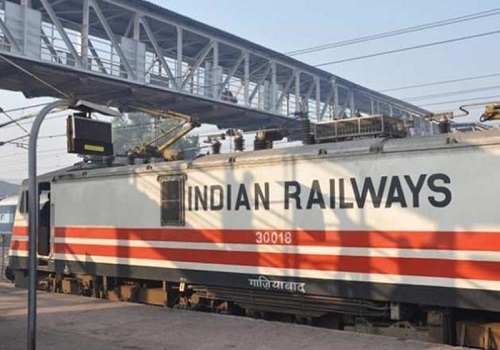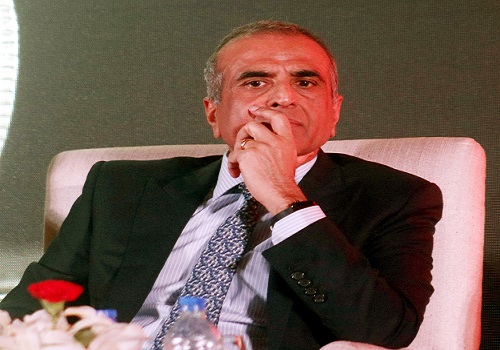ideaForge Technology coming up with IPO to raise upto Rs 579 crore

Follow us Now on Telegram ! Get daily 10 - 12 important updates on Business, Finance and Investment. Join our Telegram Channel
- ideaForge Technology is coming out with a 100% book building; initial public offering (IPO) of 86,19,013 shares of Rs 10 each in a price band Rs 638-672 per equity share.
- Not more than 75% of the issue will be allocated to Qualified Institutional Buyers (QIBs), including 5% to the mutual funds. Further, not less than 15% of the issue will be available for the non-institutional bidders and the remaining 10% for the retail investors.
- The issue will open for subscription on June 26, 2023 and will close on June 29, 2023.
- The shares will be listed on BSE as well as NSE.
- The face value of the share is Rs 10 and is priced 63.80 times of its face value on the lower side and 67.20 times on the higher side.
- Book running lead managers to the issue are JM Financial and IIFL Securities.
- Compliance Officer for the issue is Sonam Gupta.
Profile of the company
The company is the pioneer and the pre-eminent market leader in the Indian unmanned aircraft systems (UAS) market, with a market share of approximately 50% in Fiscal 2022. It had the largest operational deployment of indigenous UAVs across India, with an ideaForge manufactured drone taking off every five minutes on average for surveillance and mapping as of Fiscal 2023. Its customers have completed over 350,000 flights using its UAVs as of March 31, 2023. It ranked 7th globally in the dual-use category (civil and defence) drone manufacturers as per the report published by Drone Industry Insights in December 2022. It has grown at a CAGR of 131.47% in terms of revenue from operations over the last three Fiscals, with a Return on Capital Employed of 12.51% in Fiscal 2023. The company’s UAVs are equipped with industry leading specifications and capabilities, comparable to those of other established global players in the UAV industry.
The company has one of the industry’s leading product portfolios targeted at civil and defence applications (dual use). It has a broad range of products with feature-based differentiation such as weight class (approximately 2-7 kg), endurance class (25-120 minutes flying time), take-off altitude range (up to 6,000 meters), communication range (approximately 2-15 km), payload types, etc. Beyond the UAVs, it undertakes a full integration of its payloads, communication system and packaging. It also builds its own software stack required for flight safety, autopilot sub-system, battery, power and communication in its UAVs. The company caters to domestic and international customers across defence and civil sectors, primarily for applications in surveillance, mapping and surveying. Its UAVs has been used in extreme conditions, from very low temperatures at high altitudes such as in Ladakh to very high temperatures such as in the Thar desert, meaning that its UAVs have experienced some of the harshest environments in the world.
The company’s product portfolio consists of (a) hardware, which primarily includes UAVs, payloads, batteries, chargers and communication system (which enables communication between the ground control station and the UAVs), (b) software and embedded sub-systems, which includes the GCS software, which enables the controlling and management for its UAVs and autopilot sub-system, which enables remote control and autonomous completion of flights, and (c) solutions, which enables industry/ application specific software that enhances the value of its UAVs to the end customer. Its wide range of products gives it the necessary flexibility to meet the evolving demands of diverse customers across industries.
Proceed is being used for:
- Repayment/prepayment of certain indebtedness availed by the company.
- Funding working capital gap.
- Investment in product development.
- General corporate purposes.
Industry overview
Back in the 1990s, the Indian Army acquired UAVs from Israel. First application was use as military drones during the 1999 Kargil war against Pakistan for photo surveillance along the Line of Control (LOC). In CY14, the Directorate General of Civil Aviation (DGCA) under the MoCA (Ministry of Civil Aviation) banned the use of commercial drones in India until it formulated proper rules and regulations to govern their usage. In CY18, the DGCA released the CAR (Civil Aviation Requirements), which established a paperless procedure for filing permits for drone activities and registering licenses for drones, owners, and pilots. Apart from defence, drones came into commercial action after CY18. In CY20, drones played a crucial role in maintaining social distance and performing sanitization operations during the peak of COVID-19. Indigenously developed drones were used to deliver COVID-19 vaccines to access compromised areas and strengthen the vaccine delivery system. With the new 'The Drone Rules 2021’, individuals and organizations in India are set to find it easier to own and operate drones, setting the stage for the broader use of drones in the country. As a part of reforms to make India a global drone hub by CY30, the government also launched Production-Linked Incentive (PLI) scheme for drones and drone components companies in September 2021 to enable drone manufacturing in India.
In the FY22 budget, the Finance Minister of India introduced the 'Drone Shakti'. Startups are encouraged to provide Drone-as-a-Service. In F23 budget, the Finance Minister of India mentioned MoCA will take up with 15 identified Union Ministries to use Drone-as-a-service for which MoCA will hand-hold these Ministries by way of faster clearances and by brining industry, academia and startups together. Customers may hire drones and utilize them for various purposes, including shooting pictures and films. India's biggest drone festival, Bharat Drone Mahotsav, was inaugurated in May 2022. With 'Atmanirbhar Bharat' initiative, the Government of India has been pushing Indian drone companies for innovation in the sector through its policies. The purpose was to showcase the broad adoption of drones and the substantial employment opportunities the industry can create. India finds itself to be at a critical juncture in the evolutionary timeline of drone technology and aims to position itself as a global drone hub by CY30. The rise of the drone manufacturing industry in India will result in significant trickle-down effects across the sub-component value chain, right across motors/ propulsion systems, payloads, communication modules, batteries/ power systems, propellers, assembly, navigation systems, airframes and software solutions.
Pros and strengths
Pioneer and pre-eminent market leader in Indian UAS industry: The company is the pioneer and the pre-eminent market leader in the Indian UAS market, with a market share of approximately 50% in Fiscal 2022. Its Promoters built their first quadrotor drone in 2004. It started its operations in 2007 and with a first-mover advantage, it is among the first few companies in India to enter the UAV market and the first organisation to indigenously develop and manufacture VTOL UAVs in India in 2009. In Fiscal 2012, it developed the NETRA UAVs in partnership with a Government of India entity. It is also the first company to participate in the demonstration of 5G enabled UAVs at Indian Mobile Congress in 2018. It had the largest operational deployment of indigenous UAVs across India, with an ideaForge manufactured drone taking off every five minutes on average for surveillance and mapping as of March 31, 2023. Its customers have completed over 350,000 flights using its UAVs as of March 31, 2023. It ranked 7th globally in the dual-use category (civil and defence) drone manufacturers, as per the report published by Drone Industry Insights in December 2022.
Diversified product portfolio with robust technology stack: The company has a diversified product portfolio of UAVs built for multiple use cases and has one of the industry’s leading product portfolios targeted at civil and defence applications (dual use). It has a broad range of products with feature-based differentiation such as weight class (approximately 2-7 kg), endurance class (25-120 minutes flying time), take-off altitude range (up to 6,000 meters), communication range (approximately 2-15 km), payload types, etc. Each of its UAVs are designed with differentiations for addressing specific customer needs. Its UAVs are deployed in multiple use cases across defence and civil sectors. Further, its UAVs can be modified to address construction, infrastructure, retail, agriculture and delivery applications. Its diversified product portfolio and its ability to customise its products for specific usage as per its customers’ specifications have helped it grow and establish a track record.
Strong relationships with diverse customer base: The growth the company has achieved with its current products stems from its ability to invent and deliver advanced customer centric solutions (i.e., hardware, software and solutions), to help them operate more effectively and efficiently. As of May 31, 2023, it served a diverse base of 265 customers. It caters to domestic and international customers across defence and civil sectors, primarily for surveillance, mapping and surveying. While it does not enter into long-term contracts with its customers, it has developed long-standing relationships with them. its continuous focus on product quality and reliability over the years has led to customer stickiness. About 35% of its total customers are repeat customers who have placed at least two orders with the company. Certain of its customers have steadily increased the volume of business they undertake with it over time.
In-house design to delivery capabilities: The company design, develop, engineer and manufacture its UAVs in-house with a focus on performance, reliability and autonomy. Its own in-house product development centre allows it to design, develop and engineer its UAVs in line with the needs of customers, which includes the software stack required for UAVs. It undertake its manufacturing operations at manufacturing facility, situated in Navi Mumbai, Maharashtra which has an area of approximately 21,000 sq. ft., and is equipped with advanced equipment, modern technology and automation systems to manufacture a wide range of products. With its integrated operations i.e., from design and development to manufacturing, assembly and testing and to providing software solutions, it strive to be able to meet all its customer needs under a single roof as well as control and maintain the quality of its UAVs thereby maintaining the overall reliability and durability of its UAVs.
Risks and concerns
Highly dependent on global vendors for supply of components: The company partially import certain of its components such as carbon fibre tubes, landing gear, propellors, motors and antennas required for manufacturing UAVs. Though it is continuously evaluating the potential of domestic vendors for the supply of components in order to reduce its dependency on import of components from global vendors, it cannot assure that it would be able to meet its requirements only from domestic vendors and not be dependent on global vendors. While the GoI has introduced recent initiatives such as “Atmanirbhar Bharat Abhiyan”, which focuses on indigenisation, it cannot assure that it would be able to take full benefit of such schemes and reduce its dependency on imports. It is dependent on certain core suppliers for its components and thus if it experience significant increased demand, or need to replace an existing supplier, it cannot assure that it will be able to meet such demand or find suitable substitutes, in a timely manner and at reasonable costs, or at all.
Significant working capital gap: The company’s business requires significant working capital in connection with its manufacturing of products, financing inventory and purchase of critical components which may be adversely affected in case there is any change in terms of credit or payment. Delays in payment under its existing contracts or reduction of advance payments due to lower order intake or inventory and work in progress increases and/or accelerated payments to suppliers, could adversely affect its working capital, lower its cash flows and materially increase the amount of working capital to be funded through external debt financings. Accordingly, it may require additional capital or financing from time to time to meet its working capital gap. While it has historically been able to finance its working capital expenditure from internal accruals and availing loans from its Directors and external debt financing, this may not be the case once it is a publicly listed company.
Heavily reliant on sales to Indian government: The company is a licensed manufacturer of UAVs, under the IDR Act. Its UAVs are suitably designed for surveillance which are suitable for the tasks and operations undertaken by the Government of India (GoI) entities including both central and state government agencies such as Indian defence customers certain of the Central Armed Police Forces, state police departments, disaster management forces and forest departments and are equipped with intelligent features, which help in ‘people detection’ and ‘target tracking’. Certain of its UAVs also have the feature of ‘motion detection’ that helps in surveillance. It has entered into contracts with GoI entities for supplying UAVs and consequently its business is highly dependent on such contracts. While it operates globally, its revenue from overseas operations was negligible as of March 31, 2023 and it derives a majority portion of its total sales from contracts with GoI entities and the success and growth of its business for the foreseeable future will continue to depend on its ability to win government contracts.
Business depends on single manufacturing facility: The company has a single manufacturing facility situated in Navi Mumbai, Maharashtra which is equipped with advanced equipment, modern technology and automated systems. However, its manufacturing facility is subject to various operating risks, including the breakdown or failure of equipment and performance below expected levels of output or efficiency. Any significant malfunction or breakdown of its equipment, its automation systems, or any other part of its manufacturing processes or systems may entail significant repair and maintenance costs and cause delays in its operations. If it is unable to repair its manufacturing assets in a timely manner or at all, its operations may need to be suspended until it procures the appropriate manufacturing assets to replace them.
Outlook
ideaForge Technology is engaged in the business of manufacturing Unmanned Aircraft Systems (UAS). The company manufactures Unmanned Aircraft Vehicles for Mapping, Security & Surveillance. These drones are capable of a wide range of mining area planning, and mapping applications. ideaForge UAVs help construction and real estate boost their operations. They also assist defense forces in conducting Intelligence, Surveillance, and Reconnaissance (ISR) operations along borders. The company is a market leader in the Indian Unmanned Aircraft Systems (UAS) market with a market share of approximately 50% in fiscal 2022. It has the largest operational deployment of indigenous UAVs across India, with an ideaForge-manufactured drone taking off every five minutes for surveillance and mapping on average. The company has been ranked 7th globally in the dual-use category (civil and defense) drone manufacturers as per the report published by Drone Industry Insights in December 2022. On the concern side, the company’s UAVs have a fully integrated system relying on complex avionics and electromechanical designs and advance programming. The software architecture of such advanced programming is based on complex and interdependent applications including unencrypted signal mechanisms. Besides, the company operates in a highly regulated industry and its operations are subject to extensive laws and regulations.
The company is coming out with an IPO of 86,19,013 equity shares of face value of Rs 10 each. The issue has been offered in a price band of Rs 638-672 per equity share. The aggregate size of the offer is around Rs 549.89 crore to Rs 579.19 crore based on lower and upper price band respectively. On the financial front, the company’s total income increased by Rs 349.54 million or by 21.65% from Rs 1,614.48 million in the Fiscal 2022 to Rs 1,964.02 million in the Fiscal 2023. The company has recorded a decrease in its restated profit by Rs 120.18 million or 27.31% from Rs 440.06 million in the Fiscal 2022 to Rs 319.88 million in the Fiscal 2023. Meanwhile, the company will continue to expand its product portfolio and plan to provide differentiated offerings to its customers. UAVs are increasingly finding potential to be employed in multiple applications across infrastructure, retail, agriculture, logistics, and many other sectors. The company intends to further develop its UAVs with a focus to cater to asset inspection missions, such as inspection of towers and other vertical assets.

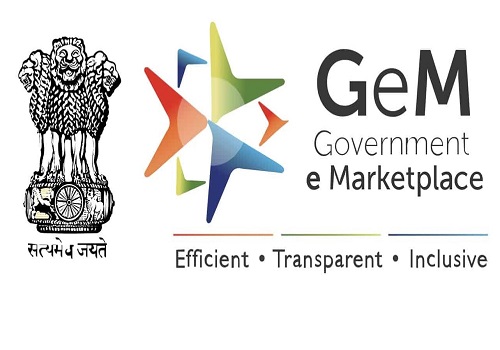
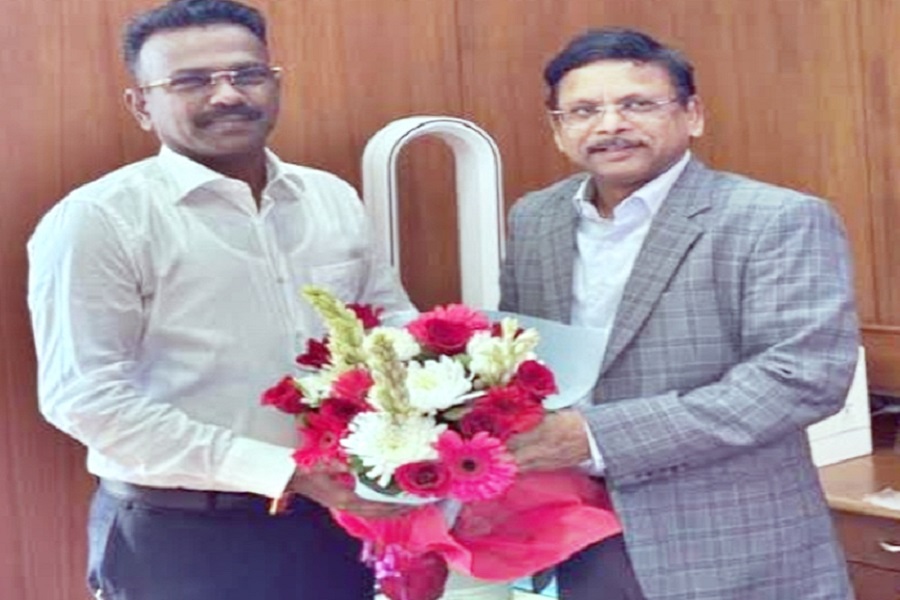





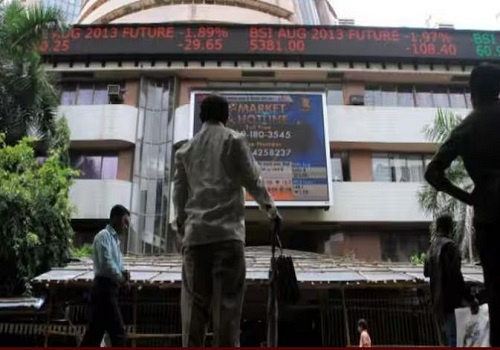



 320-x-100_uti_gold.jpg" alt="Advertisement">
320-x-100_uti_gold.jpg" alt="Advertisement">


